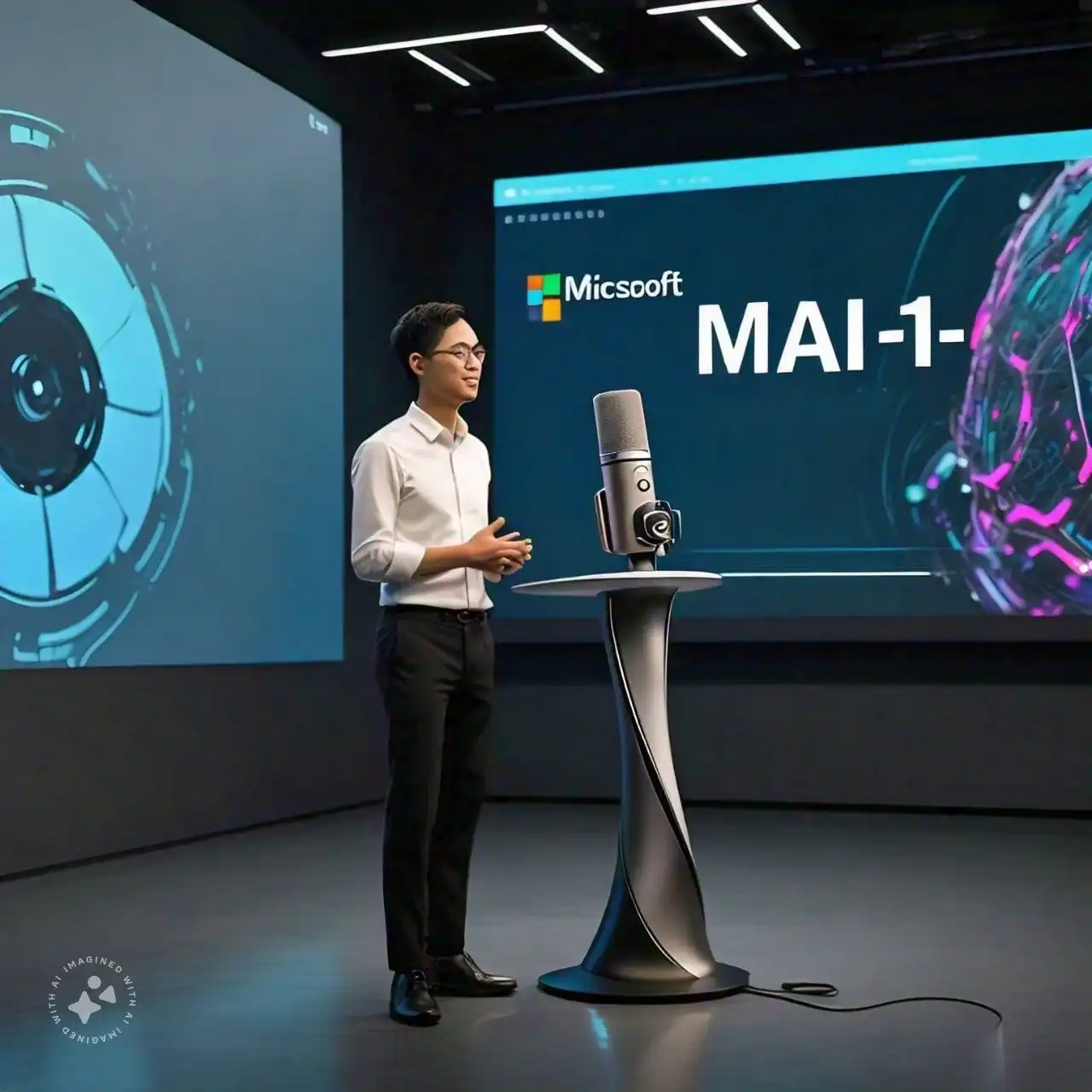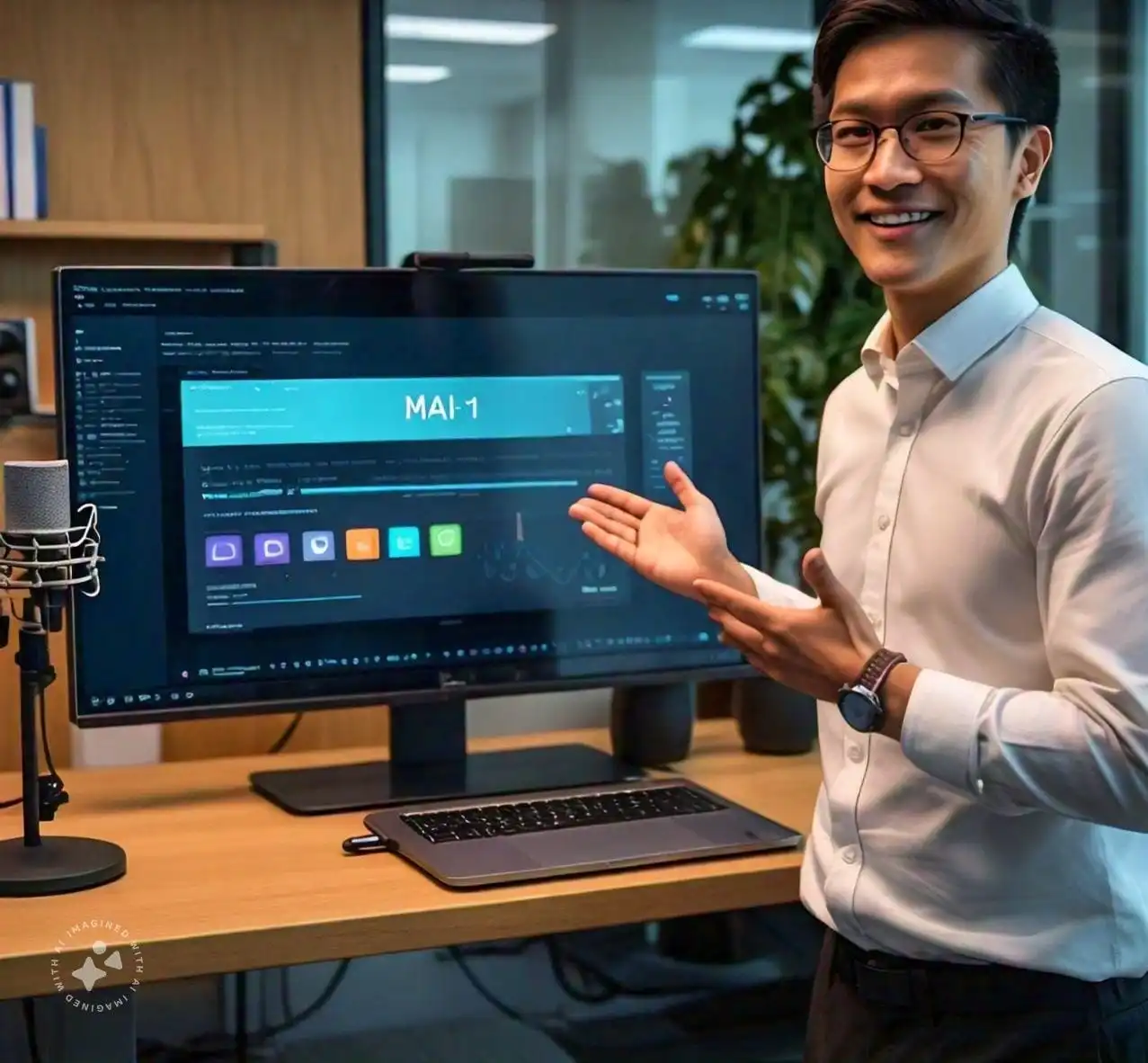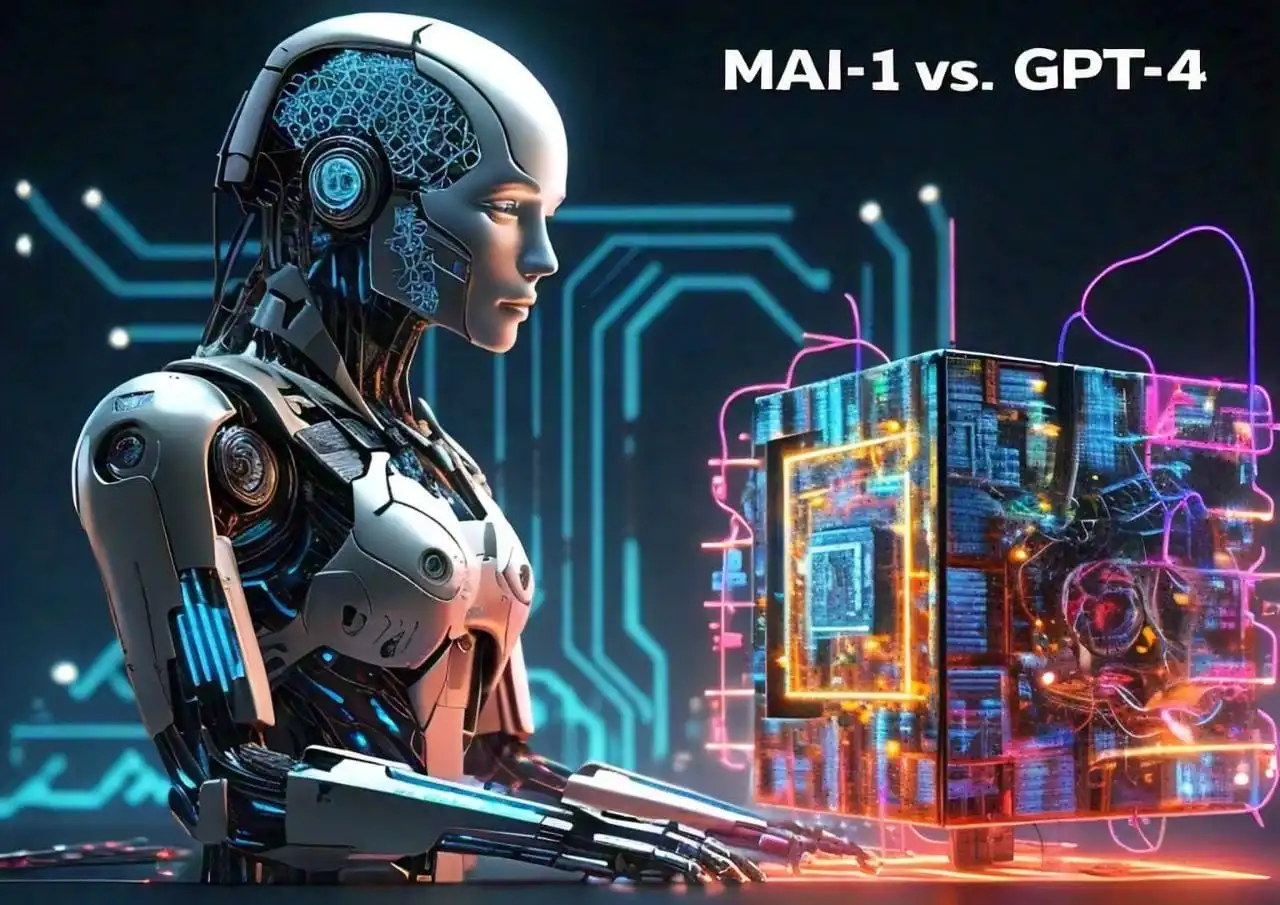Microsoft’s $11 billion investment in OpenAI might seem like a bold move, but the tech giant isn’t stopping there. It’s setting its sights on an even larger slice of the AI pie with a new project that’s been making waves in the industry.
According to a recent report by The Information, Microsoft is hard at work on its own large language model (LLM) known internally as MAI-1. This isn’t just another AI experiment—it’s a potential game-changer that could rival some of the most powerful AI models out there, including OpenAI’s GPT-4 and Google’s Gemini Ultra.
The AI Arms Race: Microsoft’s Bold Move
If you’ve been following tech news lately, you know that Silicon Valley is gripped by what many are calling an “AI arms race.” Companies are pouring billions into developing the most advanced AI models, and the competition is fierce. This race isn’t just about bragging rights; it’s about dominating a technology that many believe will reshape our world.
In this high-stakes game, Microsoft is making a bold move with MAI-1. Despite its massive investment in OpenAI, the company clearly wants to have its own horse in the race. This decision shows that Microsoft isn’t content to be a mere investor—it wants to be a leader in its own right.
What Exactly is MAI-1?

So, what makes MAI-1 so special? At its core, it’s a new large language model (LLM) that’s reportedly as powerful as other leading LLMs like GPT-4 and Gemini Ultra. If you’re not familiar with LLMs, think of them as super-smart text generators that can understand and produce human-like text. They’re the technology behind chatbots like ChatGPT that can write essays, code, and even creative fiction.
The development of MAI-1 is being overseen by a big name in the AI world: Mustafa Suleyman. If that name sounds familiar, it’s because Suleyman is a co-founder of Google DeepMind and the former CEO of AI startup Inflection. Microsoft brought him on board in March, along with most of his team from Inflection, in a deal worth $625 million. This move shows Microsoft is serious about assembling top-tier talent for its AI projects.
The Building Blocks of MAI-1
To create MAI-1, Microsoft isn’t starting from scratch. The company is reportedly using training data and other assets from Inflection AI. But that’s not all—the model’s training dataset is a mix of various types of text, including content generated by GPT-4 itself and material scraped from the web. It’s like MAI-1 is learning from the best of the best in the AI world.
The hardware behind MAI-1 is equally impressive. Microsoft is using a “large cluster of servers” equipped with Nvidia Corp. graphics cards. In the world of AI, having powerful hardware is crucial because training these massive models requires incredible computing power.
Size Matters: MAI-1’s 500 Billion Parameters
When it comes to LLMs, size often translates to capability. MAI-1 is reported to have 500 billion parameters, making it “far larger” than the smaller, open-source models Microsoft had previously trained. If you’re wondering what parameters are, they’re essentially the knobs and dials that the AI can adjust as it learns. More parameters generally mean the model can handle more complex tasks.
To put this in perspective, Microsoft’s recently announced Phi-3 Mini has just 3.8 billion parameters. Even Meta’s Llama 2 models, which are considered quite powerful, top out at 70 billion parameters. So, at 500 billion, MAI-1 is playing in a different league altogether.
When Can You Get Your Hands on MAI-1?

If you’re excited to try out MAI-1, you’ll need to be patient. The model is still in its testing phase and isn’t available to users yet. However, there’s a glimmer of hope for those eager to see it in action. Microsoft is reportedly considering debuting the model at its Build developer conference, which starts on May 16.
This timeline suggests that Microsoft might already have a working prototype or expects to have one within weeks. If they’re confident enough to showcase it at Build, that’s a good sign that MAI-1 is living up to its promise.
MAI-1 vs. GPT-4: A Clash of Titans

Now, let’s get to the question on everyone’s mind: How does MAI-1 stack up against GPT-4, currently seen as the gold standard in LLMs?
At 500 billion parameters, MAI-1 is more powerful than GPT-3 but not quite at the level of GPT-4, which is rumored to have over 1 trillion parameters. In the world of LLMs, more parameters are often associated with better performance. This means GPT-4 might have an edge when it comes to tasks that require a broader knowledge base or more nuanced understanding.
But don’t count MAI-1 out just yet. Its 500 billion parameters still make it one of the most powerful models out there. Plus, Microsoft might have an ace up its sleeve: efficiency. Even though MAI-1 has fewer parameters than GPT-4, its configuration could allow it to provide high response accuracy while using significantly less power. This translates to lower inference costs for Microsoft, which could be a major advantage in the long run.
Where Will MAI-1 Live?
Given its size, MAI-1 is too complex to run on your laptop or smartphone. Instead, Microsoft will likely deploy it in its massive data centers. From there, it could be integrated into services you already use, like Bing for web searches or Azure for cloud computing tasks.
This deployment strategy makes sense. By housing MAI-1 in its data centers, Microsoft can offer its power through services that millions already use, potentially giving it a fast track to widespread adoption.
The Bigger Picture: Microsoft’s AI Ambitions
MAI-1 isn’t Microsoft’s only AI project. Just weeks ago, the company unveiled Phi-3 Mini, an open-sourced, cost-effective small language model. Despite having only 3.8 billion parameters, Phi-3 Mini can outperform LLMs more than 10 times its size. This shows that Microsoft is experimenting at both ends of the spectrum—small, efficient models and large, powerful ones like MAI-1.
It’s unclear if MAI-1 is part of the same series as Phi-3, but these projects collectively demonstrate Microsoft’s multi-pronged approach to AI. They’re not putting all their eggs in one basket; instead, they’re developing a range of models to suit different needs and scenarios.
What This Means for You
You might be wondering, “Why should I care about another AI model?” The answer is simple: Tools like MAI-1 have the potential to transform how you work, learn, and interact with technology.
Imagine having an AI assistant that understands the nuances of your questions, offers creative solutions to complex problems, and even helps you learn new skills. That’s the promise of advanced LLMs like MAI-1. Whether you’re a student, a professional, or just someone who loves technology, these AI models could make your life easier and more productive.
Moreover, the competition between giants like Microsoft, OpenAI, and Google is good news for you. As each company tries to outdo the others, they’ll keep improving their models. This race to the top means you’ll have access to increasingly capable AI tools, often at no cost or integrated into services you already use.
The Verdict: A Promising Contender
So, is MAI-1 truly a GPT-4 rival? Based on what we know, it certainly has the potential to be. With 500 billion parameters and the backing of Microsoft’s substantial resources, MAI-1 is a formidable contender in the AI arena.
However, the true test will come when MAI-1 is released and subjected to rigorous benchmarks and real-world applications. Parameters are important, but they’re not everything. Factors like training data quality, model architecture, and fine-tuning techniques also play crucial roles in an LLM’s performance.
What’s clear is that Microsoft isn’t content to be a bystander in the AI revolution. With MAI-1, they’re making a bold statement: They want to be a leader, not just a investor. As this AI arms race heats up, it’s projects like MAI-1 that will shape the future of technology—a future where AI understands us better, helps us more effectively, and maybe even surpasses our own capabilities.
Stay tuned for MAI-1’s debut. Whether it outshines GPT-4 or not, its arrival marks another exciting chapter in the AI story—a story that’s rapidly becoming our reality.
FAQ’s
What is Microsoft’s MAI-1 AI model?
MAI-1 is Microsoft’s new large language model (LLM) with 500 billion parameters, designed to rival powerful AI models like GPT-4 and Gemini Ultra. It’s being developed in-house and could significantly boost Microsoft’s position in the AI race.
When will Microsoft’s MAI-1 be available to use?
MAI-1 is still in its testing phase and not yet available to users. However, Microsoft may debut the model at its Build developer conference starting May 16, 2024, if it shows sufficient promise by then.
How does MAI-1 compare to GPT-4?
MAI-1 has 500 billion parameters, making it more powerful than GPT-3 but not as large as GPT-4’s rumored 1 trillion parameters. Despite this, MAI-1 is expected to provide high response accuracy while using less power, potentially giving it an efficiency edge.
Who is leading the development of Microsoft’s MAI-1?
Mustafa Suleyman, co-founder of Google DeepMind and former CEO of AI startup Inflection, is overseeing MAI-1’s development. He joined Microsoft in March 2024 along with most of Inflection’s employees in a $625 million deal.
Will MAI-1 work on my personal computer or phone?
No, with 500 billion parameters, MAI-1 is too complex to run on consumer devices. Microsoft will likely deploy it in its data centers, where it can be integrated into services you already use, like Bing for web searches or Azure for cloud computing tasks.


